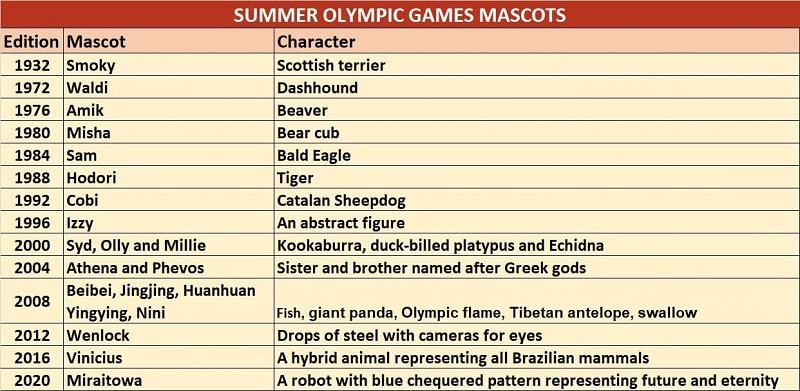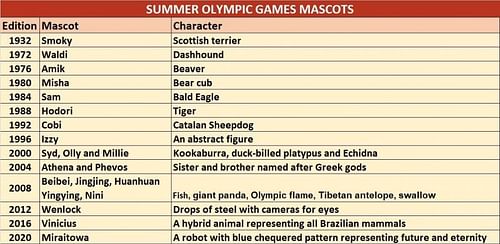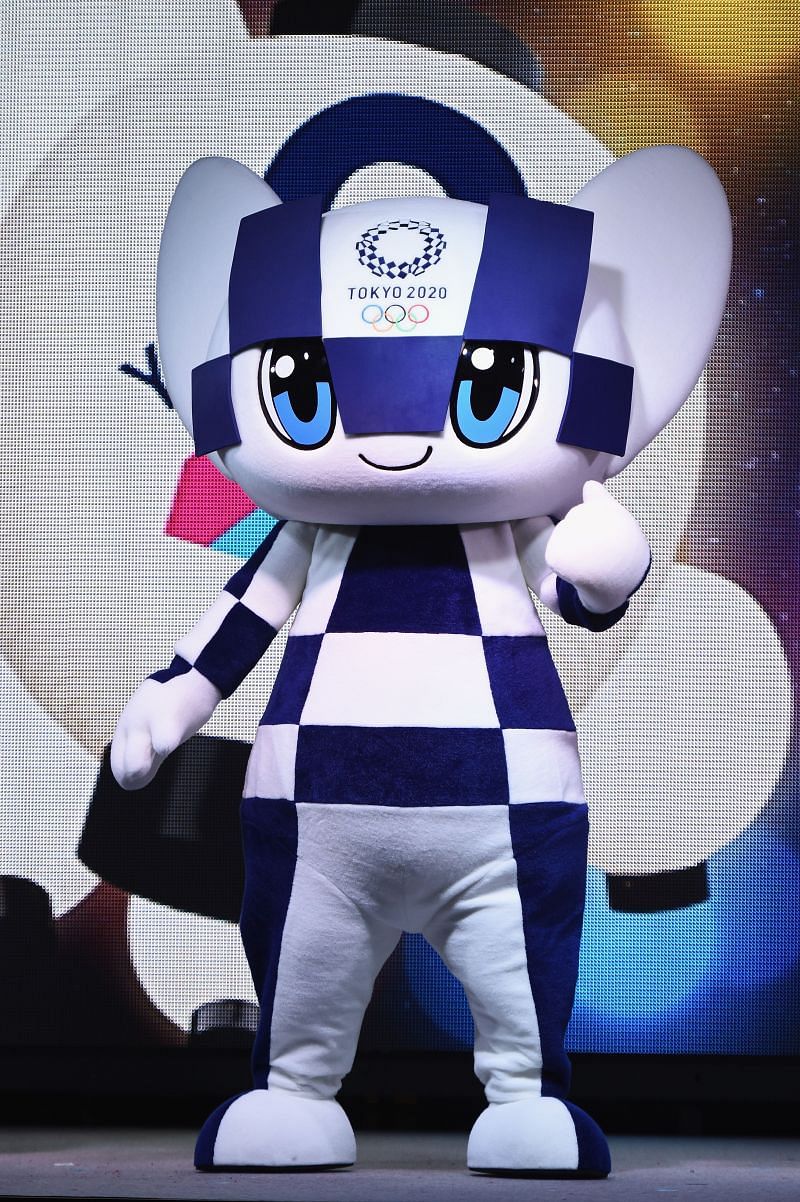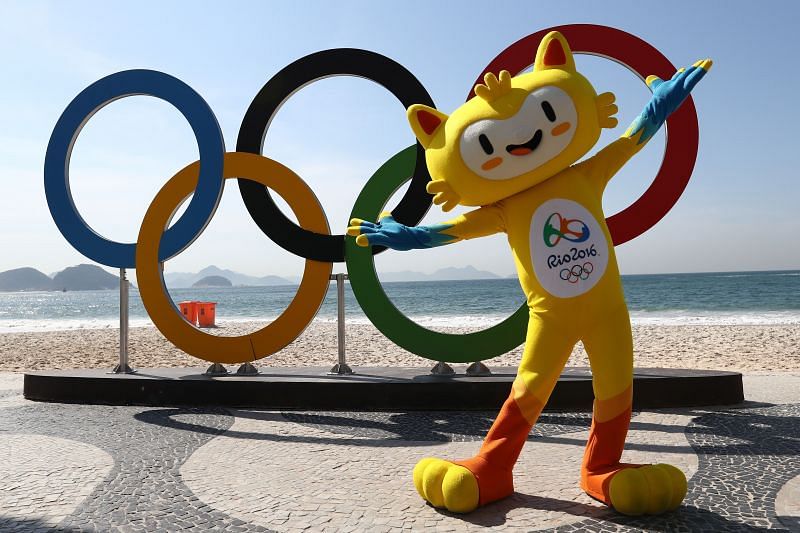
A look at Summer Olympic mascots throughout the years
After a year of curtailed seasons and cancelled tournaments, the much-awaited 2021 Summer Olympics now tiptoes towards its scheduled date.
In the months leading up to the grandest sporting spectacle, the world seems to be trooping in from every distant part of the globe.
While most have already sealed their places for the Tokyo Olympics, the rest will look to punch their passes with some top-quality performances in the months building up to the Games. In every facet, expression and celebration, the Summer Olympics for this year will be a truly global event.
Teams, events and stadiums will be key highlights, but a large part of the fun and excitement will be watching the Games’ mascots. They may not be out on the ground racing against Usain Bolt, throwing a javelin as high as Jan Železný, or swimming against the clock like Michael Phelps, but, much like every year, they will form a big part in the sporting extravaganza.
Also read: How many countries have hosted the Summer Olympics till now
The Evolution of the Olympics Mascots
Ever since the first official Olympics mascot was produced, it has become a popular element of the Games.
Over time, they have received great media publicity and extensive utilization because of the scope and international exposure of the Olympics. Mascots are funky characters, most often animals native to the host country, and very rarely, human figures.

The mascots depict the culture of the place where the Olympics are being held. Olympic mascots debuted at the 1968 Winter Olympics as they welcomed visitors to an event to enhance the excitement of fans.
They are also responsible for making the Games a memorable trip down memory lane, which will linger for about four years after the Games have long concluded.
World's First Official Olympics Mascot
Appearing in many shapes and sizes, mascots convey the theme of the Olympic Games, and showcase the distinctive geographical features, history and culture of the host city. With that in mind, Germany launched the first official Olympic mascot during the 1972 Munich Olympics.
The mascot was Waldi the Dachshund, which represented the indispensable qualities matching that of an athlete, namely resistance, tenacity, and agility. An instant success, Waldi was used extensively in pre-Games publicity.
#5 Miraitowa - Tokyo 2021 Olympics

Tokyo 2021 will be the fourth Olympic Games hosted by Japan. The first two Games, the 1964 Tokyo Olympics and the 1972 Sapporo Winter Olympics didn’t feature any mascots.
The official mascot of this year’s edition is a futuristic, superhero creature named Miraitowa. It is meant to be the embodiment of both Japanese culture and spirit of the Olympic Games.
Miraitowa is extremely athletic, digitally designed and reverberates the country’s obsession with animation.
#4 Vinicius - 2016 Rio Olympics

The 2016 Rio Olympics mascot, Vinicius, was a humanoid creature meant to delineate a mix of all Brazilian animals, inhabiting the tropical jungles.
With his keen sense of smell, he can sniff out exciting adventures coming along his way. His incredible hearing allows him to find the most enthusiastic fans among all.
A bright yellow in color, Vinicius was named in honor of a famous Brazilian poet and composer Vinicius de Moraes.
#3 Wenlock - 2012 London Olympics

Wenlock, the official mascot for the London Olympics, was meant to resemble the Olympic stadium. It has one large eye, and the yellow light on its head symbolizes London's black taxi cabs.
The name of the mascot is derived from the "Wenlock Games", an early British inspiration for the current Olympic Games.
The large eye is the lens of a camera, through which it films everything that it perceives.
If one looks closely at the wrists, it wears five hand bracelets bearing the same colour as the Olympic rings. We can also notice three podium places for all the medal winners in each category placed on its head.
#2 Beibei, Jingjing, Huanhuan, Yingying & Nini - 2008 Beijing Olympics
Beibei, Jingjing, Huanhuan, Yingying, and Nini were the official mascots for the Beijing Olympics held in 2008. Their five names together, "Bei Jing Huan Ying Ni", roughly translates to "Welcome to Beijing".
It is believed that they were five in number because it is considered a lucky number that corresponds largely to the number of Olympic rings and that of Chinese elements like fire, water, wood, gold, and earth.
Each was given significant athletic representations: Beibei for aquatic sports, Jingjing for strength sports, Huanhuan for ball games, Yingying for track and field, and Nini for gymnastics.
#1 Athena and Phevos - 2004 Athens Olympics

Phevos was the official mascot for the 2004 Athens Olympics. The mascot derived its design from age-old dolls found at archeological sites in Greece.
It was designed to look clumsy with a triangular body and long neck. Phevos, along with its Paralympic mascot, Athena, symbolize the joy of sports and the spirit of the Olympics.
Phevos is known as the god of light, medicine, law, philosophy, and music, whereas Athena is known as the goddess of wisdom, courage, civilization, and heroic endeavor.